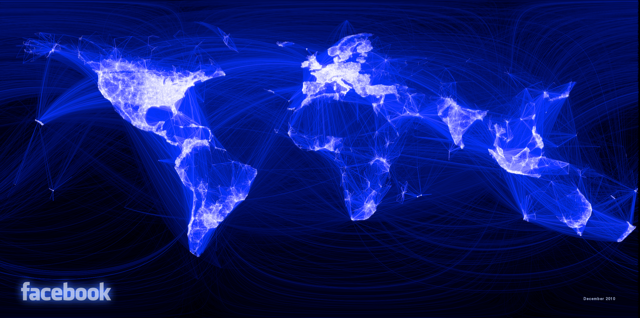Rory Remer, Ph.D., Department of Educational and Counseling Psychology, University of Kentucky
Abstract: The original formulation of Morenean sociometry has been, for the most part, modified. Consequently, a question arises about the effectiveness of that formulation relative to its derivatives. In this article, I make a delineation between Morenean (strong) sociometry and other adaptationse, aiming at a revitalization of Moreno’s theory.
Psychodrama – Resources
There will be many more – some will be available in the contextually related posts below.
My pages:
My writing page – has a section
Papers – links to resources:
Psychodrama Network News PNN_Winter_07.pdf
Contains: Message to the Membership
from Zerka Moreno
Part II of Moreno’s Influence on Martin Buber
Psychodrama and Psychotherapy – Resources
This post is just for BOTH psychodrama and psychotherapy – see als Psychodrama – Resources and Psychotherapy – Resources. I’ll add more as I discover more.
abstract A comparison of Freud’s and Moreno’s theories with regard to their implications
for psychodrama therapy. Basic differences in the theories are discussed with special regard to
therapist role, transference and tele, insight and catharsis, the time concept, the body, and
developmental psychology. Other topics treated are concepts of drive or energy, psychic structure
and role theory, psychic determinism contra the doctrine of spontaneity-creativity and differences
between an intrapsychic and an interpersonal approach. An outline of the relationship of
psychodrama and its philosophy and practice to other schools of psychotherapy is given.
Zeitgeist
I just watched the movie Zeitgeist: Addenda Here: http://video.google.com/videoplay?docid=7065205277695921912#
I got to it because I saw in Google news that the movie is showing in Christchurch tonight. What I like about the movie is that it shows the end is night. It shows the nature of the problem, essentially the crumbling of the US empire.
It does it quite well! It shows the power of the IMF and World bank, the corporations, and shows really well how the US conducts its empire. It is holistic in many ways, drawing on people from a lot of fields for their opinion.
Critique and and a link follow, and a pdf:
Sociometry
http://www.facebook.com/notes/facebook-engineering/visualizing-friendships/469716398919
I want to take a photo of one of Moreno’s maps – to contrast.
Zeitgeist
Have been listening to the audios and thinking about the sociodrama workshop I will be conducting at the Auckland Psychodrama Conference 2011 on the Zeitgeist. “Listening to the Spirit of the Times.”
Who shall survive and all of JL Moreno’s work looks to a future. Sociometry is the science of the future.
As I became socially and politically conscious, the future loomed large. “We shall overcome”, “Times are a changing” the counter-culture loomed large and it drove me forward (in the ’70s) into a utopian future that crashed both psychologically and socially.
Psychodrama arrived just at that moment in my life in in 1979. It filled my “me generation” needs as well as the counter-cultural needs. It was able to offer repair needed from the pain of the 70s but hooured the visions of the 60s.
And psychodrama did indeed flourish in the eighties in Australia and NZ. I think because Max and Lynnette Clayton of course but also because of the zeitgeist.
Psychodrama offered better social tools than yuppies and better psychological ones than traditional therapy.
Leadership in a Networked World
Leadership in a Networked World http://peggyholman.com/leadership-in-a-networked-world/
Making sense of psyche – ref John Locke
The quote from Locke below describes an idea I have long held. I did not know till today that John Locke had it 100s of years ago. It is relevant to me as I work with the psyche, or spirit as he calls it, as the main stuff of my day to day work. The psyche is, in his words, “abstruse”, and there is no way to talk of it other than through forms that reflect ultimately “sensible ideas” ie idea that relate to things we can experience with our senses.
Hence we use dramatic terms like Oedipus complex, and geographical terms like depression. Talk of the psyche is form of poetry and metaphor to describe the inner side of action, make sense of action.
Locke ECHU BOOK III Chapter I Of Words or Language in General:
Psychodrama open day
Building community
Deepening relationships
Increasing spontaneity in a busy world
Discovering new ways of being and doing
Coming to Life
A day of experiencing Psychodrama
Moreno Institute East
Linking here as the whole site is worth exploring:
Moreno Institute East – Biographies:
New research out of the University of Vienna by Dr. Robert Waldl shows the enormous influence that Dr. Moreno’s theory of the Encounter (Invitations to an Encounter, 1914) had on the development of Martin Buber’s I-Thou philosophy, and Buber’s influence on philosophy, theology, and psychology. Dr. Moreno’s wife Zerka Moreno writes, “While it is true that Buber broadened the idea of the Encounter, he did not create the instruments for it to occur.” Moreno…produced the various instruments we now use for facilitating the human encounter, sociometry, group psychotherapy, psychodrama, and sociodrama” (Zerka Moreno, Psychodrama Network News, Winter 2007).

